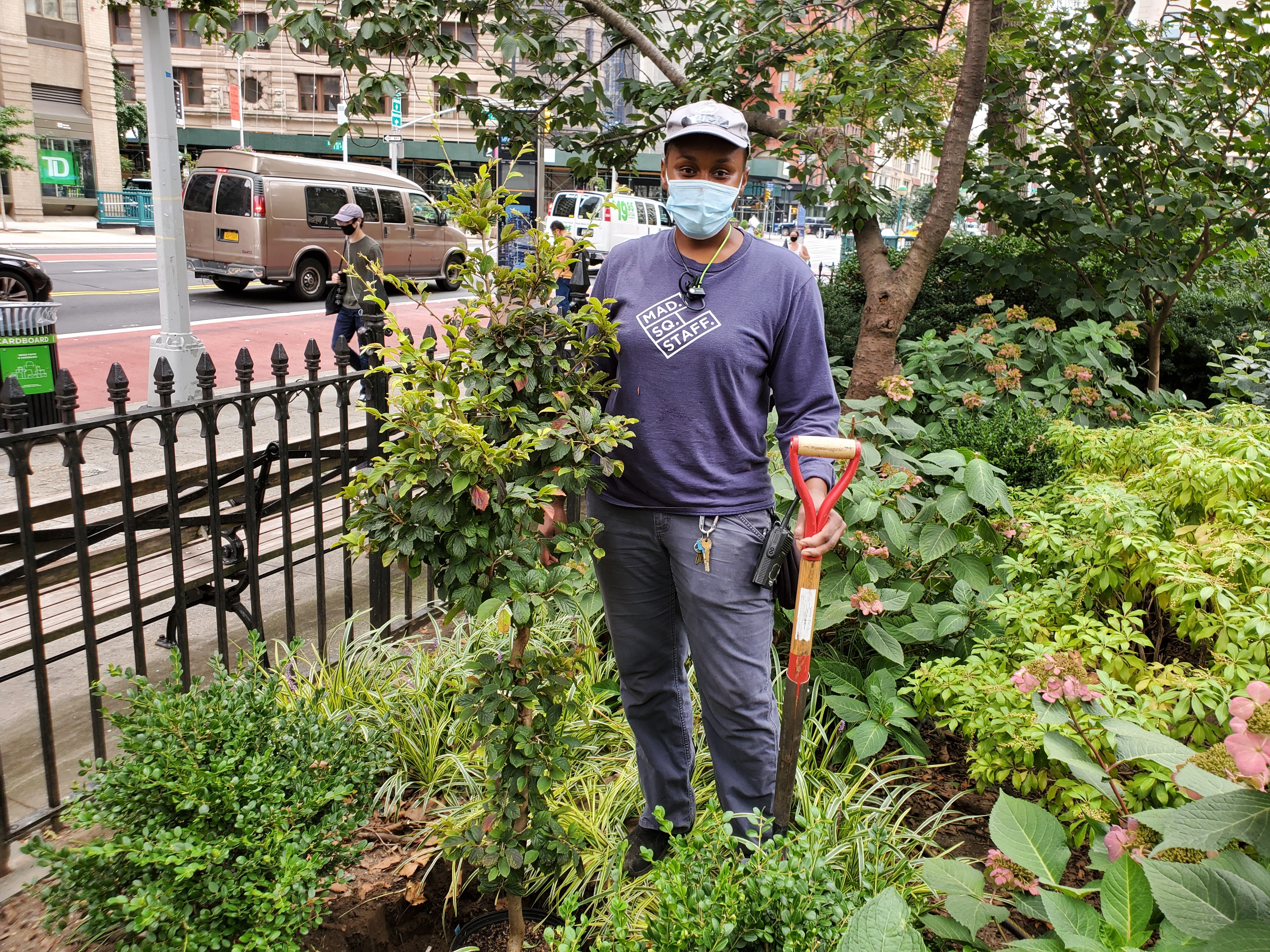This site uses cookies – Learn more.
Setting Strong Roots at Madison Square Park
Setting Strong Roots at Madison Square Park

Late summer and fall are some of the best times to plant new perennials in the garden. The cool temperatures and rain help plants to set out strong roots for the next year. This fall, you can expect to see a few new trees added to our arboretum. In order to steward the next generation of trees, the Conservancy plants about five trees a year. This process helps ensure that young trees are established and ready for action as mature trees decline. Here’s a sneak peak of some of the new sapling superstars.
Cercis canadensis ‘Flamethrower’ or the flamethrower redbud is a new addition to our redbud collection. This plant was released this year from the JC Raulston Arboretum and features brilliant red and yellow foliage unlike any other redbud. Here at Madison Square Park, this native tree is best enjoyed by leaf cutter bees who can be seen chewing perfectly round holes in leaves and using these cut outs to build their nests.
A new specimen of Liquidambar ‘Slender Silhouette’ will be planted near the playground replacing a tree that died during Hurricane Isaias. This columnar sweetgum cultivar has fantastic fall foliage and will help increase the diversity of fall color seen in the Park each year. As a native tree typically found slightly south of New York City, this tree will continue to support local ecology and continue to thrive in our warming summers and winters.
Two swamp white oaks, Quercus bicolor will be planted on Madison Avenue. Swamp white oaks are one of our preferred street trees for sun around the Park perimeter. These native trees feature attractive peeling bark and orange gold fall color. They are able to tolerate dry conditions, occasional drought and flooding and salt build up. All important attributes for roadside conditions. Most importantly these trees provide important food for other park wildlife. 521 species of caterpillar require Oak as part of their diet and 14 bird groups that visit the Park depend on some part of the oak to complete their life cycle. In addition, swamp white oaks have large acorns that provide abundant food for our squirrels that can be stored all winter long.
Nyssa ‘Green Gable’ will continue to add to the Park’s fall color pallet. This cultivar of our native blackgum was chosen for its perfect gumdrop shape and fantastic red fall foliage.
Last but not least, a small specimen of Parrotia subaequalis or the Chinese ironwood will be planted in the Park. This tree is incredibly rare in cultivation and is critically endangered in its original habitat in China with less than 100 individuals in its native population. This tree has persistent and deep red and purple fall color in autumn and the bark exfoliates with age. This tree is a relative to our witch hazels in the park and like the witch hazel, they bloom in winter when most other plants are still asleep.
These trees may be small now, but in no time, they’ll reach for the sun with the rest of the forest providing Park visitors fresh air, shade, and food for our wildlife for years to come.



